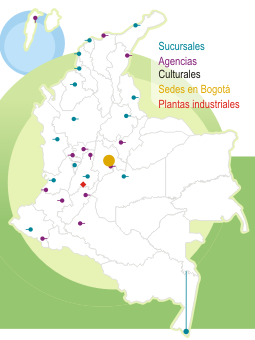Essays on Economic Policy (ESPE in Spanish) - Income Inequalities in Colombia: What Are their Determinants and How Have they Been Affected by the Covid-19 Pandemic?
In the journal Essays on Economic Policy (ESPE) - we disclose the results and policy proposals that arise from academic research carried out at the Banco de la República. When you read us, always keep in mind that the content of our articles, as well as the analyzes and conclusions derived from them, are the sole responsibility of their authors. The material disclosed in our ESPE magazine does not compromise or represent the opinion of Banco de la República or that of its Board of Directors.
In the journal Ensayos sobre Política Económica - ESPE - we disclose the results and policy proposals that arise from academic research carried out at the Banco de la República. When you read us, always keep in mind that the content of our articles, as well as the analyzes and conclusions derived from them, are the sole responsibility of their authors. The material disclosed in our ESPE magazine does not compromise or represent the opinion of Banco de la República or that of its Board of Directors.
Approach
This paper studies the determinants of regional income inequalities (non-labor and labor) between 2010 and 2019 and how they changed due to the effects of the COVID-19 pandemic.
The first part studies these elements from a national perspective. The analysis is then disaggregated, with an emphasis on Colombia’s twenty-three main cities. In both cases, a micro-decomposition is used, following the methodology of Bourguignon and Ferreira (2005), to study how education-related components, both the years of education and its returns, affect inequalities. In addition, it evaluates the role of demographic factors, such as the average age of individuals and the number of children, on inequalities in total income.
Concerning the COVID-19 pandemic, given that it has had critical effects on the labor market, the paper's emphasis shifts somewhat toward the elements most affected by lockdowns. In this respect, in addition to educational and demographic factors, the effect of the reduction in income due to the fall in employment rates and labor market participation on inequalities is analyzed.
Contribution
The paper provides a detailed analysis of the evolution of inequalities in the 2010s. For this purpose, microdata from the Great Integrated Household Survey (GEIH in Spanish) are used to determine the behavior of its determinants. Simulations are also carried out to calculate the effect of these determinants on inequalities' variations during the analysis period. In contrast to related literature, this paper has a regional approach, which gives a broader view of the particularities of inequalities, such as the comparison between the twenty-three main cities. Finally, progress is made in studying the determinants of changes in inequalities during the first months of the pandemic.
“As a result of changes in the labor market due to the effects of COVID-19, inequalities returned to the values of the early 2010s, although they have fallen again with the recovery of economic activity.”
Results
The reduction in inequality experienced by Colombia between 2010 and 2019 is mainly due to significant reductions in inequality within some cities, rather than to declines in inequality between cities. Labor income plays an important role in explaining the reductions in inequality during that period. Within labor income, the number of years of education is the main factor contributing to the reduction in the Gini index. Rents and transfers are the items that contributed the most to reducing inequality in terms of non-labor income, both in the national total and in most cities. As a result of the changes in the labor market due to the effects of COVID-19, inequalities returned to the values of the early 2010s, although they have fallen again with the recovery of economic activity. The most significant shock is observed in labor income, which occurs via the extensive margin with the increase in unemployment and the intensive margin via the fall in wages. Rental income also fell at the end of 2020, increasing inequality. On the other hand, transfers alleviated the fall in income for the poorest households; however, their effect on inequality is moderate, given the magnitude of the shock to labor income.

































































